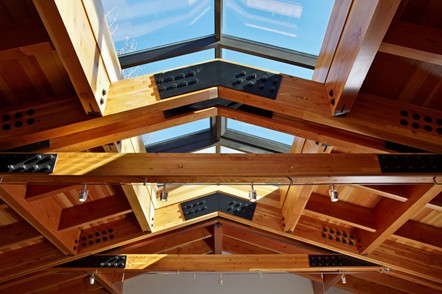
Connection Design for Residential Buildings in Australia: Timber and Steel Structural Solutions
March 27, 2025
Author: Michael Safari
Why Are Connections Important in Residential Construction?
In structural engineering, connections are critical for stability, ensuring that timber and steel elements are securely joined to handle loads, movement, and environmental factors. Proper connection design enhances the strength, durability, and safety of residential buildings in Australia.
This guide explores timber-to-timber, timber-to-steel, and steel-to-steel connections, covering fastener choices, load conditions, design considerations, and maintenance strategies.
Common Methods for Connecting Timber to Timber
Timber-to-timber connections rely on various fasteners and techniques to transfer loads efficiently and maintain structural integrity.
Fasteners for Timber-to-Timber Connections:
- Nails & Screws – Used for light-load applications.
- Bolts & Dowels – Provide stronger, load-bearing connections.
- Mortise & Tenon Joints – Traditional method for precise, interlocking connections.
- Lap Joints – Enhance stability and alignment in timber framing.
These connections ensure shear resistance and help manage load transfer in residential timber frames.
How to Design Strong Timber-to-Steel Connections?
Timber-to-steel connections require reinforced fasteners and brackets to handle different material properties.
Best Practices for Timber-to-Steel Connections:
- Use Angle Brackets & Plates – Bridge the gap between materials, ensuring stability.
- Bolted & Welded Connections – Ideal for high-load applications.
- Galvanized & Stainless Steel Fasteners – Prevent corrosion in humid environments.
- Consider Material Compatibility – Avoid reactions that could weaken the structure.
Proper design ensures durability and structural efficiency in hybrid residential buildings.
Best Fasteners for Timber-to-Steel Connections
Choosing the right fastener type is crucial for ensuring long-lasting and secure connections:
- Lag Screws – Provide strong holding power in thicker timber elements.
- Bolts – Ideal for high-stress load transfers.
- Specialized Connectors – Designed for seamless integration between timber & steel.
For external applications, opt for galvanized or stainless-steel fasteners to prevent rust and deterioration.
Steel-to-Steel Connections in Residential Timber Structures
Steel-to-steel connections often appear in hybrid structures, where steel beams or supports complement timber framing.
Design Considerations for Steel-to-Steel Connections:
- Bolted, Welded, or Riveted Joints – Selected based on load demands.
- Thermal Expansion Management – Important in areas with temperature fluctuations.
- Load Transfer Optimization – Ensures even distribution of forces.
These connections improve stability and load-bearing capacity, especially in multi-material residential designs.
How Do Load Conditions Affect Connection Design?
Connections must withstand different load types that impact residential structures:
Wind Loads
- Require connections that resist lateral forces.
- Critical for flexible timber structures.
Dead Loads (Permanent Structural Weight)
- Connections must evenly distribute weight to prevent weak points.
Live Loads (People & Furniture)
- Requires secure fasteners to support varying loads.
Proper load path design ensures that forces are effectively transferred through the structure.
Australian Standards & Building Codes for Structural Connections
In Australia, connection design must comply with national standards to ensure safety and durability:
- AS 1684 – Design requirements for timber structures.
- AS 4100 – Guidelines for steel structures.
- AS/NZS 4600 – Covers light-gauge steel framing systems.
Following these standards helps structural engineers create resilient, code-compliant residential buildings.
How to Inspect & Maintain Structural Connections?
Regular inspections & maintenance prevent connection failures and ensure long-term stability.
Key Maintenance Practices
- Check for Moisture Damage – Essential for timber connections.
- Inspect for Corrosion – Common in steel fasteners and brackets.
- Tighten Loose Bolts & Screws – Ensures load stability.
- Replace Rusted Fasteners – Prevents weakening of the structure.
A well-maintained connection system helps extend the lifespan of residential buildings.
Final Thoughts: The Role of Connection Design in Australian Residential Construction
Secure timber and steel connections are essential for:
- Structural Integrity – Prevents failures under wind and load conditions.
- Durability – Ensures long-lasting performance.
- Code Compliance – Meets Australian building standards.
For expert structural engineering solutions in Melbourne, consulting with professionals ensures safe, efficient, and well-designed residential connections.
📢 Need Structural Engineering Advice?
At Fundament, we specialize in connection design, timber-to-steel integration, and residential structural engineering. Contact us today for expert solutions tailored to your project!

